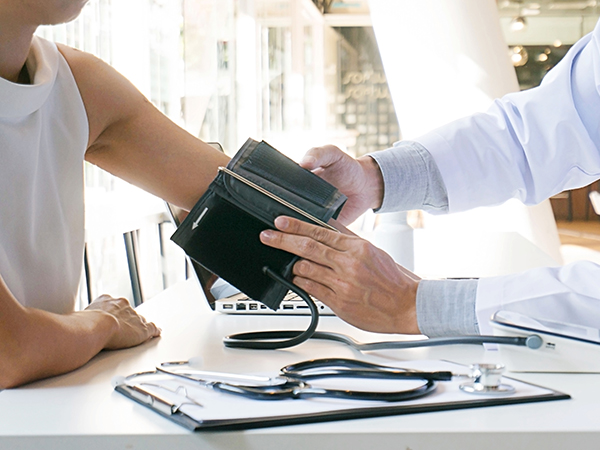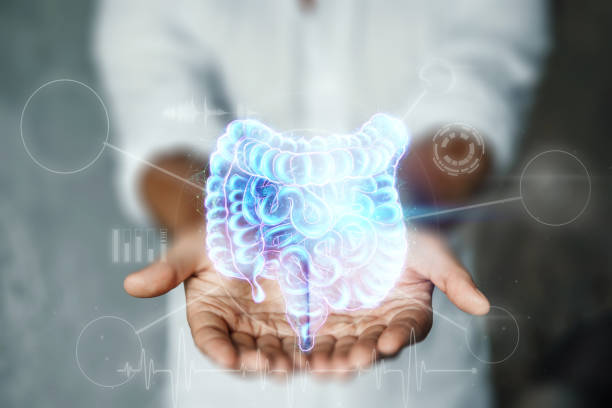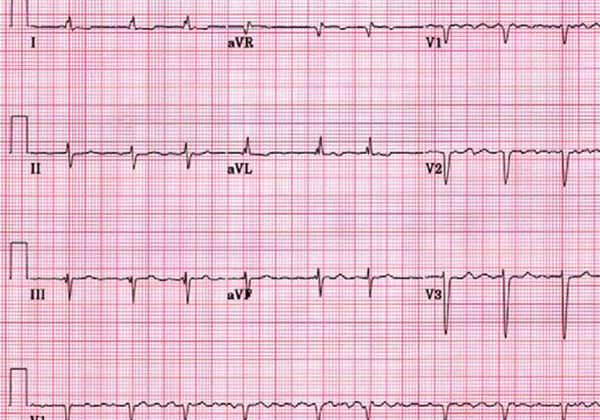Renal Denervation Lowers Blood Pressure in Medication-Resistant Hypertension
Median blood-pressure reduction of 4.5 mmHg seen in treatment group compared with placebo
Two months after undergoing renal denervation (RDN),patients with high blood pressure who did not respond to treatment with multiple medications had a greater reduction in day time systolic blood pressure than patients who did not receive RDN, with no difference in major adverse effects, according to research presented at the American College of Cardiology’s 70th Annual Scientific Session.
Patients who received RDN—a procedure that delivers energy to overactive nerves in the kidneys to decrease their activity—saw a median reduction of 8 mmHg in their day time ambulatory systolic blood pressure compared with their level prior to treatment. They also had a 4.5 mmHg greater drop in median blood pressure compared with those who received the sham procedure, despite both groups receiving the same three guideline-recommended antihypertensive medications as background therapy. The benefit of RDN was consistent regardless of sex, ethnicity, age, waist size or blood pressure level at study entry.
“This study has shown for the first time that RDN can effectively lower blood pressure in patients in whom it is uncontrolled despite standardized treatment with three guideline-recommended medications,” said Ajay Kirtane, MD,professor of medicine at Columbia University Vagelos College of Physicians and Surgeons and an interventional cardiologist at New York-Presbyterian/Columbia University Irving Medical Center. Kirtane is a co-principal investigator of the trial.
High blood pressure, or hypertension,is a leading cause of heart attacks, strokes and death. According to the Centers for Disease Control and Prevention, nearly half of U.S.adults have high blood pressure. High blood pressure remains a major public health problem despite the availability of a wide range of medications to treat it, with as many as 40% of patients continuing to have uncontrolled high blood pressure despite treatment with medications, Kirtane said.
“RDN offers an additional tool that we could use to help these patients, hopefully achieving better overall control of hypertension, especially if longer-term data support the durability and safety of the procedure,” he said.
Overactivity of the sympathetic nerves in the kidneys can contribute to high blood pressure. RDN works by delivering energy that decreases the overactivity of these nerves. Other studies in patients with less-severe hypertension have shown that, compared with a sham procedure, RDN reduces blood pressure.The procedure is performed in a hospital catheterization lab under local anesthesia and with X-rayimaging guidance. A catheter is directed from the femoral artery in the thigh to the arteries that supply blood to the kidneys. There, the catheter delivers ultrasound-based energy to the nerves in the arteries. Patients may be discharged the same day or may spend one night in the hospital after the procedure.
The international study, known as the RADIANCE-HTN TRIO trial, enrolled 989 patients in the U.S., the United Kingdom and five European countries. Patients’ average age was 53 years and 80% were men. At study entry, patients were taking an average of four antihypertensive medications. Despite this, patients’ average blood pressure at study entry was 163/104mmHg. (According to the 2017 ACC/American Heart Association Guideline for the Prevention, Detection, Evaluation, and Management of High Blood Pressure in Adults, blood pressure of 130/80 mmHg or more is considered high.)Patients’ median body mass index (BMI) was about 32.7(a BMI of 30 or higher falls within the obesity range).Roughly a quarter of patients also had Type 2diabetes.
Upon enrollment in the study, all patients were switched from their existing medications to a regimen consisting of three blood pressure-lowering medications combined into a single pill taken once daily. The use of such once-daily combination pills has been shown to improve patient adherence to blood pressure-reducing medication.
After four weeks on this once-daily, three-drug regimen, patients whose blood pressure was still 135/85 mmHg or higher as assessed by ambulatory blood pressure monitoring underwent non-invasive imaging to ensure that their renal arteries were suitable for RDN. A total of 136 patients were then randomly assigned to receive either ultrasound-based RDN or a sham procedure. A sham procedure is used in non-pharmacological studies; a control group receives an imitation procedure instead ofthe actual medical intervention that is being studied.
Neither the patients nor the doctors they saw for follow-up visits knew who had received RDN and who had received the sham procedure. All patients continued to take the once-a-day combination pill during the two-month follow-up period. Patients’ urine was tested to evaluate how well they followed their treatment with the three-medication pill during the study.
The primary efficacy endpoint was the change in daytime ambulatory systolic blood pressure from study entry to two months. The investigators also monitored major adverse events occurring within 30 days of the procedure, including death from any cause, kidney failure, a blood clot, any complications involving the veins or arteries serving the kidneys that required treatment, or a severe increase in blood pressure.
Compared with the sham procedure, daytime ambulatory systolic blood pressure,24-hour ambulatory systolic blood pressure, night time ambulatory systolic blood pressure and systolic blood pressure measured in the doctor’s office were all significantly lower with RDN. No differences in major adverse events were observed between the treatment arms.
Kirtane said that he and his colleagues will continue to follow the patients in the study for three years to assess the durability, safety and ongoing benefit of the RDN procedure.
Source: American College of Cardiology
Full bibliographic information
“Ultrasound renal denervation for hypertension resistant to a triple medication pill (RADIANCE-HTN TRIO): a randomised, multicentre, single-blind, sham-controlled trial,” Michel Azizi, Kintur Sanghvi, Manish Saxena, et al., The Lancet, DOI: 10.1016/S0140-6736(21)00788-1, American College of Cardiology 70th Annual Scientific Session, May 16, 2021





